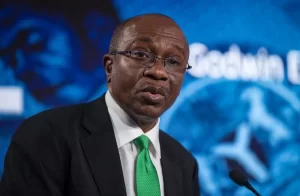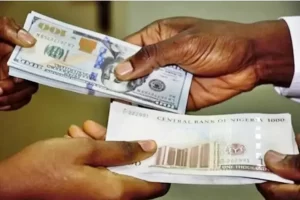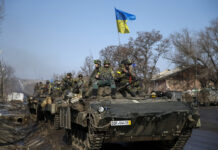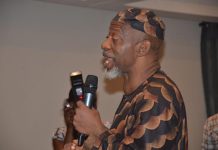A little over four decades ago, a dollar traded for a fraction of naira. Precisely, a $100 bill could only buy N82. Naira was the pride of Africa and was a tradable currency in most West African countries. In those days, Nigeria was not only the largest oil producer in Africa, but its economy was also the most complex. It was a net exporter of oil as the old Port Harcourt Refinery and the just-commissioned Kaduna Refinery were functional. The country had no reason to depend on importation, a major drain of foreign earnings. Then, the economy was serviced by locally assembled cars, buses and trucks with Peugeot and Volkswagen employing thousands in Kaduna and Lagos and creating the critical middle-class needed to build an agile economy. But Peugeot and Volkswagen were only a symbol of the vibrant local automatic industry. Leyland produced trucks/buses in Ibadan while ANAMCO kept the industry going with its brands of commercial buses and trucks from its Enugu operation.
The value chain was enriched by the activities of Dunlop, a premium tyre brand, with its chains of operation growing into a minacity in the Ikeja Industrial Estate. Dunlop had an active competition in Michelin, which had a large operational base in Garden City as it were. The Tyre company did not have to import raw materials but sourced rubber from the vast plantations in Edo, Delta and other states. In the Mushin area of Lagos, Vono operated on swathes of land where it produced vehicle seats alongside mattresses. In Ibadan, a city famous for nurturing the country’s nascent industrial revolution, Exide, IsoGlass and Ferrodo were also famous for their role in the growth of the automobile industry in Nigeria and other West African countries. From electronics to consumables, Nigerian companies held their heads high among their peers from different parts of the world. In the 1980s, the groundnut pyramid and cocoa plantations were already suffering from the Dutch Disease. But the agriculture had not been affected so much that the country would need to import garri. From the Isolo to Kaduna industrial layout, the Nigerian working class had sufficient varieties of local fabric to choose from. And the universities of Ibadan, Ife, Nsukka and their likes were, indeed, centres of national pride, attracting students from Ghana, South Africa and even Europe. The foreign students who came in with hard currencies became a source of injection into the economy. With the robust local manufacturing, the leakages were minimal.

A decline sets in
Suddenly, the concentration risk of oil took a damn hold on the economy and the cookies began to crumble. Agriculture is often considered an inferior good, which explains the reason it gets relegated when the economy improves. For this reason, some countries single out the sector for extra fiscal incentives such as subsidies to make them attractive to a reasonable proportion of the population. But that did not happen in the case of Nigeria. Hence, agriculture, which sustained the food needs of the post-independence population explosion and provided raw materials needed to keep the pace of industrial growth, was the first casualty of the petrodollar economy. As more and more school leavers and other able-bodied youths abandoned rural areas in the ensuing drift to the urban centres in search of easy money, agriculture, and an energy-demanding activity was left for the elderly and, to an extent, the female folks. The 1970s oil windfall triggered a major shift in the economic culture, breeding a new generation of youths in search of easy fortune. The danger of that new culture was only earth by the bust of the 1980s. As it later turned out, there were already structural defects the economy could only at best drag along with debilitating impacts – one of which was the foreign exchange crisis. The Structural Adjustment Programme (SAP) was a direct response to the macroeconomic challenges but whether the Breton Wood prescription was the needed policy is an open debate to date. What remains undisputable is that SAP’s (poor) implementation marked the beginning of naira debauchery, including the wide market arbitrage responsible for many manipulations. Today, the arbitrage is almost 100 per cent, a far cry from the five per cent recorded by the IMF and, perhaps, the widest across the globe. The CBN, historically, adopted a gradual devaluation in attempts to close the market gap that has opened the space for all sorts of manipulations and rent-seeking behaviours. But each time naira is re-pegged, the black market exchange rate, which the apex bank has dismissed as not a reference value of the local currency, also adjusts.
Good policies, bad results
In 2014, when the CBN rate stood at N155/$, the black market was about N180/$, putting the premium on the alternative market at about N35/$. This gap is the cause of rapacious rent-seeking that has become a burden. The former CBN Governor, Sanusi Lamido Sanusi, exposed the depth of this challenge at a seminar, which he attended as Emir of Kano. The local currency has gone through a debilitating history and experimentations that have left it weaker, less of a store value but more of an article of financial speculation. Intertwined with the sore past are a litany of policy gambits that only accentuate external pressure more than they reflect the peculiarities of the local market. Most times, the prescriptions are half-implemented or abandoned at the realization of their inherent flaws. As part of the SAP package, the Second-Tier Foreign Exchange Market (SFEM) was introduced in 1986 as an option for achieving a dynamic equilibrium, as the first-tier market operated by the government was fraught with the usual rigidities and politicking. The era only succeeded in institutionalising the current parallel market and speculative currency trading. As part of efforts to rein in a falling naira, the Autonomous Foreign Exchange Market (AFEM), a replica of SFEM, was introduced by the military regime of late Sani Abacha as a window to sell FX to end-users at a market-determined rate while the official rate was pegged at N22/$. But AFEM could not meet the ever-growing FX demand as the mono-economic culture constrained earnings. Rigidities increased while round-tripping became a norm, pushing black-market culture to a height not seen before. Banks become major players in the black-market practices.
Dr. Joseph Sanusi came with the Interbank Foreign Exchange Market (IFEM) as the country, as it has become in recent history, sought a more liberal FX management model. This happened when a dollar was trading on the black market for over N80/$ while the official exchange was N22/$, with a market arbitrage of over 260 per cent. With such a wide margin, currency trading was to become the most lucrative operation in the financial circle. The CBN threatened but did nothing radically different from what had become the norm. Politicians also joined in the fray to reap from the windfall. The upward adjustment of the official exchange rate only narrowed but did not close the market differential to rein manipulations and other anti-market practices. But the banks were smarter as control gave birth to other manipulative tendencies. Some of them introduced what was then knowns as ‘the Nigeria Inter-bank Settlement System (NIBSS) and Draft’, a scheme that allowed one to pay the CBN-approved rate through NIBSS and settle the balance with a bank draft – a win-win backdoor approach that effectively beat regulation. This continued until the famous Soludo recapitalisation. The subsequent oil boom was like a circuit breaker in the historical effort to achieve a workable FX management approach. The oil boom, buoyant external reserves and huge Excess Crude Account (ECA) provided a sense of security, which gave Soludo some headroom to liberalise FX and expand the items that could be funded. Funding was no longer limited to the importation of raw materials and inputs but extended to finished goods, education and medical trips. The expanded official funding widow made the black market unattractive. For once, naira gained against the dollar without any deliberate effort to strengthen it.
When there was a shock in FX supply during the 2008 oil price crisis, Nigeria had a sufficient buffer in the external reserves (which was around $65 billion) to weather the storm. But then, Soludo took what had become an unpopular path – he created some scarcity measures to support devaluation, as some experts had suggested. The post-Soludo liquidity era was driven by hot money. After the exit of Chief Olusegun Obasanjo as President, oil prices were high but the country was not building its reserves. Sanusi Lamido Sanusi, who restored the interbank and introduced the Wholesale Dutch Auction System (WDAS), needed a sufficient buffer to stabilise naira and sustain confidence. What did he do? He removed the one-year restriction on foreign investment in government bonds. That opened the floodgate for hot dollars and heightened the volatility of the reserves. Fortunately, there was no major shock as the oil market remained bullish, providing respite throughout that era.

Global shocks send weak naira reeling
But with the coming of the Russia-Ukraine war, the international oil market had been bearish all through Emefiele’s era. In response, the CBN removed 41 items (43 later) from the official FX funding list, which has increased the pressure on the parallel market. This intensified with the stopping of weekly funding of bureau de change (BDCs). For over two years, COVID-19 has compounded the systemic risks. For instance, diaspora remittances dropped by 23 per cent in 2020 (from $23.81 billion to $17.21 billion) only to increase to $19.2 billion last year. Perhaps, the ‘Naira 4 Dollar’ Scheme introduced by the CBN to boost official remittance receipts triggered much of last year’s increase, which still put the figure behind the pre-COVID-19 record. Last year, capital importation also slumped to a five-year low of $6.7 billion and 31 per cent decline from $9.7 billion recorded in 2020. Yet, dollar demand pressure continues on the upward trend with trapped foreign capital in the stock market alone hitting $5 billion last year. Learning on the distress past, the future of macroeconomic indices connected to FX outlook is bleak and beclouds forward-looking data.
The neoliberal view is an untested policy option, perhaps only attempted but abandoned on a few occasions. But until Nigeria grows its productive capacity to reduce its dependence on foreign, there is sufficient reason to doubt the naira would emerge from liberalisation with its attribute as a store of value. And the reformists have done little to explain how the currency will survive the wide supply-demand gap. The supply has ballooned in the last few years as overseas education demand soared. Under the watch of Emefiele, naira has lost over 75 per cent of its value against dollar on the black market. But what is more worrisome is that it could be among the worst performing among its peers in the African region. With large cash holders seeking an alternative to unavailable in the run-up to the deadline to mop up old naira banknotes, 85 per cent of which is outside the banking system, Nigerians are now piling on CFA and other currencies. While CFA trades one for 70 kobo officially, the parallel market rate has spiked to N1.2/CFA. That could eventually make naira, a currency backed by full faith in the regional power, the least valuable currency in the West Africa region, where CFA is being pitched by France and its former colonies as the currency of choice.




























